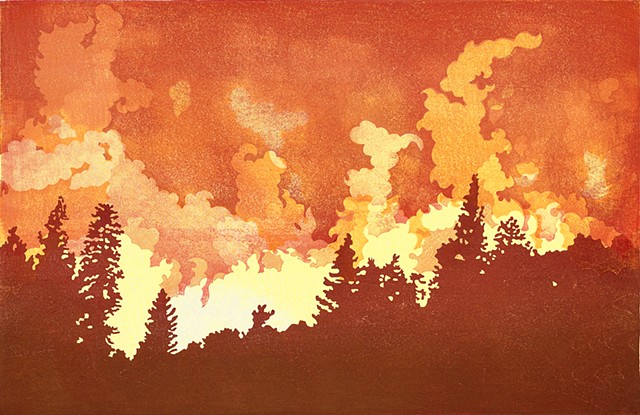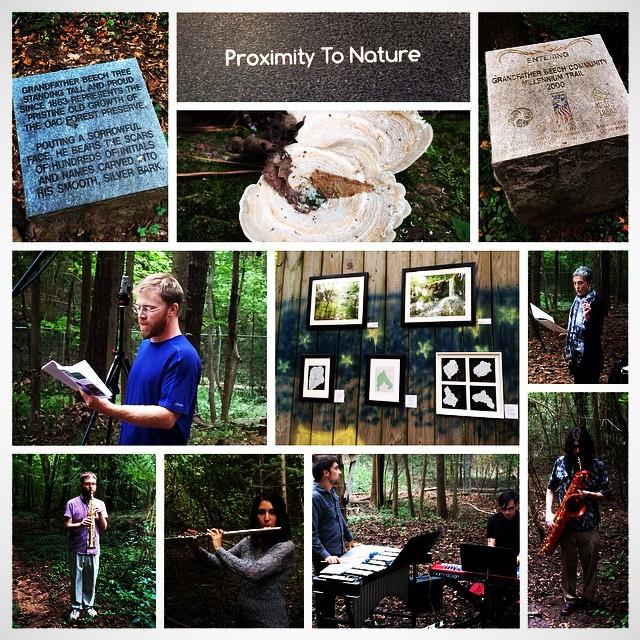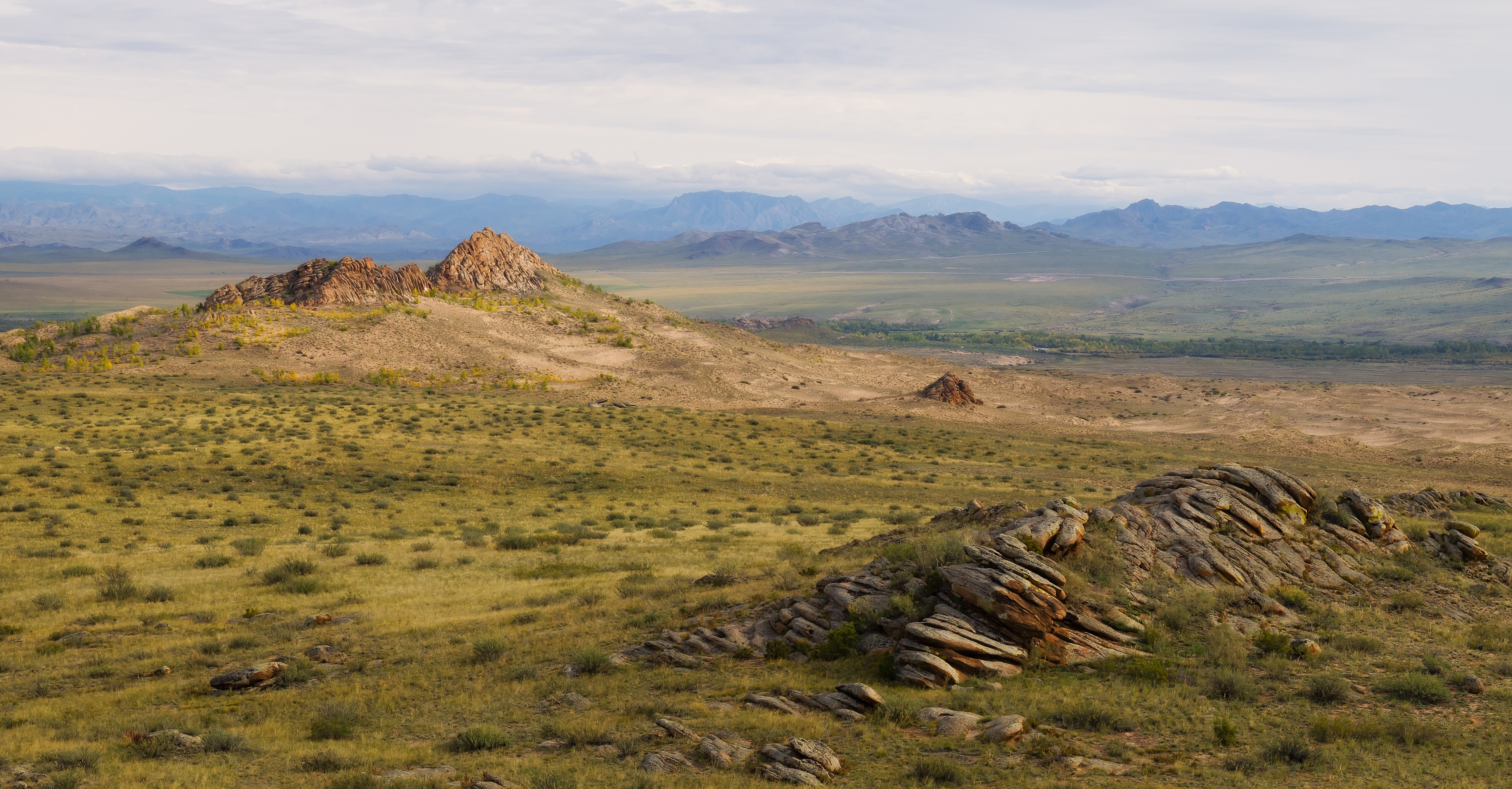
Image: “Wildfire” by Annie Bissett. Courtesy of the artist. More information.
Editor’s Note: Landscape Music composer Ryan Suleiman contributes his first essay to LandscapeMusic.org.
This Saturday I’m looking forward to hearing the premiere of my new orchestra piece, Burning, commissioned by Pete Nowlen and the Symphony d’Oro in Rancho Cordova (Sacramento). The collaboration has been such a joy for me. The concert is billed as a celebration of the Earth, programmed alongside Beethoven’s “Pastoral” Symphony No. 6 (one of my favorites) and James DeMars’ Lake That Speaks, two other works that engage with nature. The concert is also fundraising event for Whisker Warriors, a nonprofit that helps animals displaced by fires.
What does it mean for our art when the natural balance of the environment is in a state of crisis?
But of course, it is not just color and form that inspires us. It is the awe one feels looking at something so momentous as a mountain or an ocean and knowing that it has been here for millions and millions of years. It is knowing that it is part of a delicate balance and complex and dynamic web of life and death. Something bigger than oneself. It is also knowing that, as old as the mountains and the valleys are, they were literally completely different at one time, since they’re always changing. Or knowing that as seemingly timeless as the formations of California’s Central Valley are, they used to be an inland sea. It is the fact that nature provides nourishment and healing for us, but also can destroy us – it doesn’t care about us. It is the sublime. The reason we find inspiration in nature is because it contains both surface level beauty and these much deeper meanings because of our physical and spiritual connection with it. Continue reading




